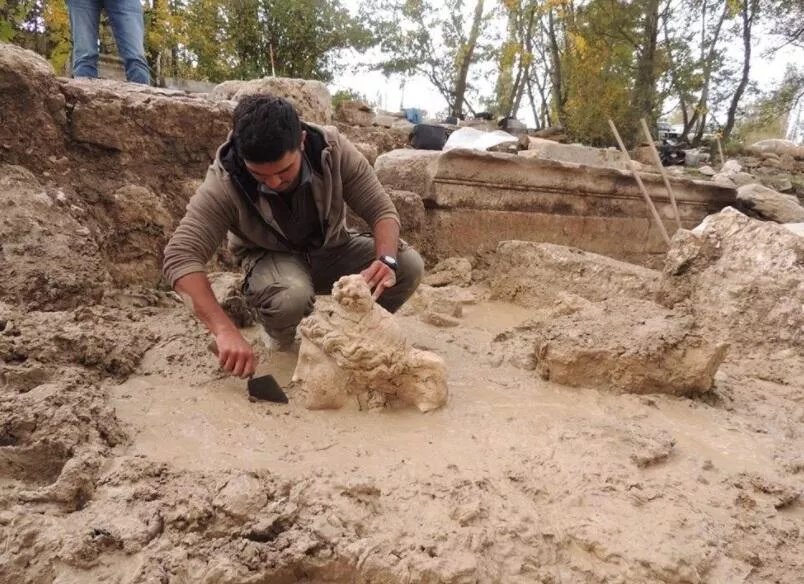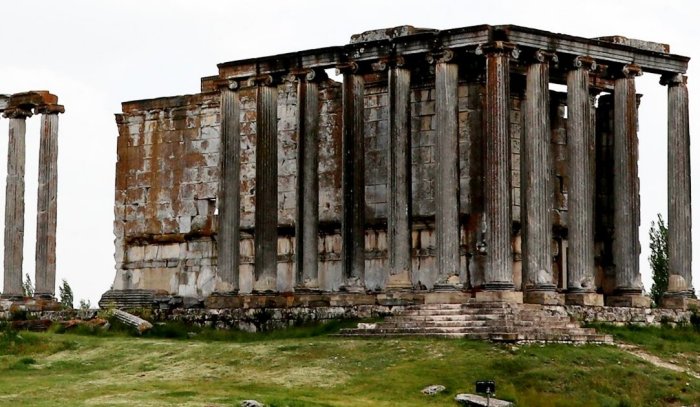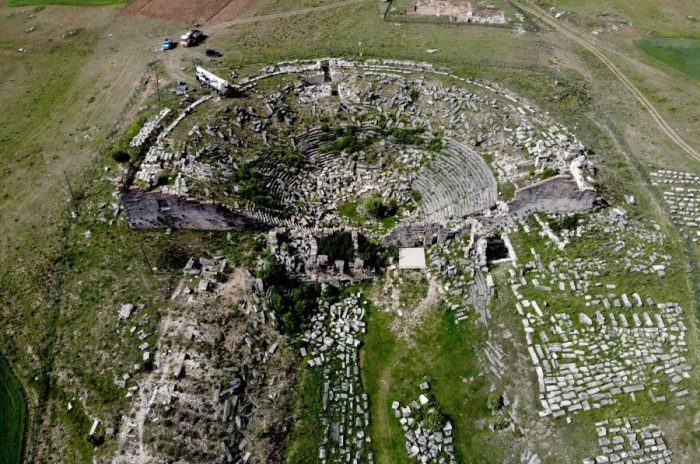Conny Waters – AncientPages.com – Several artifacts have been unearthed in the ancient city of Aizanoi, located 57 kilometers (35 miles) from Kütahya city center, a hometown, known for the famous carpets, and tiles. Aizanoi had its golden age in the 2nd and 3rd centuries AD and became the center of episcopacy in Byzantine times.

The city has a temple built for Zeus, which is the best-preserved temple in all Anatolia. There are also a large theater and a stadium adjacent to the theater.
Now, another archaeological discovery is reported from the ancient city of Aizanoi that was included in the UNESCO World Heritage Tentative List in 2012.
See also:
Rare Collection Of Roman Coins Unearthed In Ancient City Of Aizanoi, Turkey
Statue Of Greek Health Goddess Hygieia – Unearthed

Ruins of the ancient city of Aizanos, Turkey – the Temple of Zeus, one of the best-preserved temples in Anatolia. Image credit: AA
During ongoing excavations in the city’s ruins carried out by the Kütahya Museum Directorate, archaeologists unearthed the statue heads of Aphrodite, the mythological goddess of love and beauty, and Dionysus, the god of wine, writes Hurriyet Daily News
Speaking to the state-run Anadolu Agency, Gökhan Coşkun, the excavation coordinator and professor from Dumlupınar University Department of Archaeology, said that the excavation and restoration works were being carried out within the scope of the Penkalas Project.
“We continue excavations in the stream bed, known as ‘Penkalas’ in ancient times and ‘Kocaçay’ today. We know that there are five bridges over the river. Ancient writers report that one of them was a wooden bridge. The restoration of one of these bridges has been completed, while the other is in progress. The excavation of the other has begun,” Coşkun said.

Ruins of the ancient city of Aizanoi and the theater part of the ancient city. Image credit: AA
“These finds were a surprise for us during the excavations in the stream,” Coşkun said. “They were the heads of large marble statues. One of them is the statue head of ‘Aphrodite,’ which is about 50 centimeters high and known as the goddess of love and beauty. The other is the 45-centimeter-high statue head of ‘Dionysus,’ known as the god of wine in mythology. In our previous works, we generally found the bodies of statues, and we could not find any heads. We were very happy to find these statue heads.”
Coşkun added that the heads of the statues give information about the faith system in the Roman period.
“We know that the ancient Greek gods Aphrodite and Dionysus existed with different names in the Roman period as well. These are important findings for us as they show that the polytheistic culture of ancient Greece existed for a long time without losing its importance in the Roman period. The findings suggest that there may be a sculpture workshop in the region.”
![]()
Article in Portuguese – here
Written by Conny Waters – AncientPages.com Staff Writer





